Cylindrically-conical fermentation tanks for the fermentation and maturation of beer
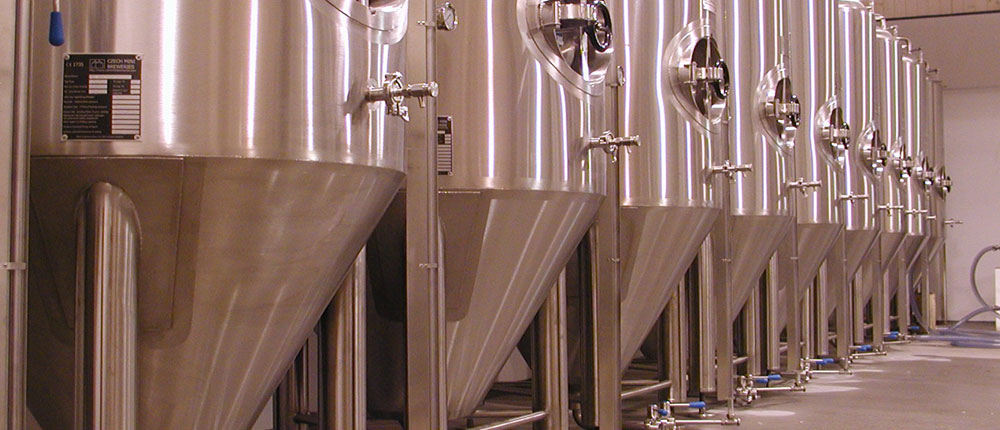
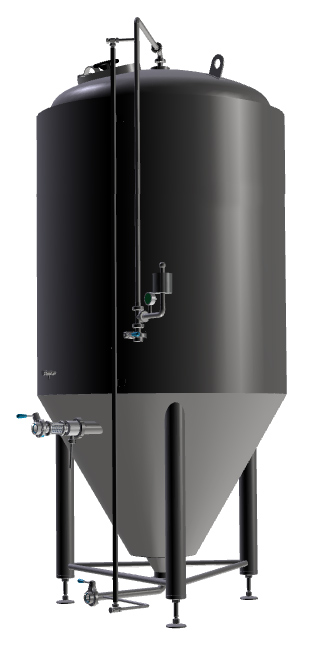
Cylindrically-conical fermenters, cylindrical conical tanks, conical beer fermentation tanks, cone fermentors – these are the most common names which include the same class of special pressure vessels with conical (funnel) bottom, which are designed for both phases of fermentation the beer, the main fermentation of beer (primary fast fermentation) and maturation of beer (secondary slow fermentation). Wort that is an intermediate beer product, is made in the brew machine is pumped into the cylindroconical tank immediately after the hot brewing process. Then in the cylindrically-conical tank the main fermentation of wort takes place under mild overpressure or without overpressure. Then the sedimenting yeast is separated from the pure young beer, a human operator sets required overpressure in the same tank using an adjustable valve and the secondary beer fermentation process starts under pressure in low temperature. Both stages of the fermentation process usually take place in the same tank, or beer is transferred to another purified cylindrically-conical tank after the primary fermentation to providing of the secondary beer fermentation process.
Cylindrically-conical fermentors
– universal equpment intended for both phases of the beer fermentation process
- Primary phase of the fermentation process: the main beer fermentation – it includes an conversion of most sugars to alcohol produced by the activity of live beer yeast at a fermentation temperature – depending on the type of yeast used from 6 ° C to 12 ° C (beer fermented on bottom of the tank) or from 15 ° C to 24 ° C (beer fermented on surface of the wort) in a pressureless environment.
- Secondary phase of the fermentation process: the beer maturation – beer is slowly fermenting at low temperature under increased overpressure. Beer is naturally saturizated with the carbon dioxide that releases from the beer by yeast activity. The secondary fermentation process is usually taken place at a temperature of from 1 to 2 ° C under pressure approximally 2 bar.
Cylindrically-conical pressure fermentation tank is one of several types of containers used in brewing for the fermentation and the maturation of beer. Its main advantage in comparation with the fermentation in the open fermentation vat is very good protection of fermenting wort against unwanted infection. Due to the closed construction, the cylindrical conical tank content is well protected by the fermentation plug and by mild overpressure in the tank (arising by releasing carbon dioxide during the beer fermentation) against the infection by alien organisms from the surrounding environment.
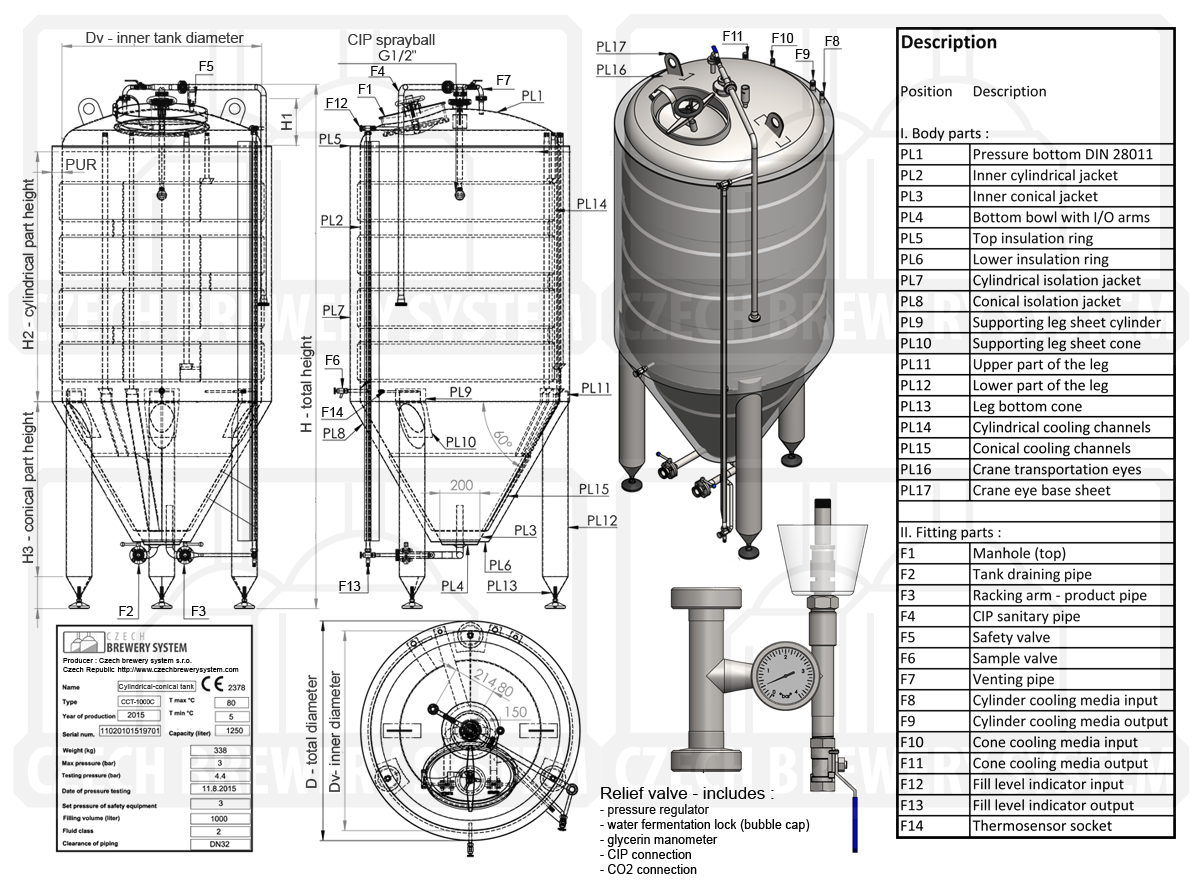
Compared to simple cylindrical fermentation tanks (with a domed bottom), the cylindrically-conical fermentation tanks have a more complex construction (and thus a higher production price). On the other hand, the separation of sedimentary yeasts from the product is significantly more effective if this type tank is used for the fermentation. There is not necessary to repeatedly perform multiple beer purification (the beer cleaning using the pumping of the product from the tank to other tank above the yeast surface), finally resulting in less beer loses.
Placing of the cylindrically-conical fermentors in a brewery :
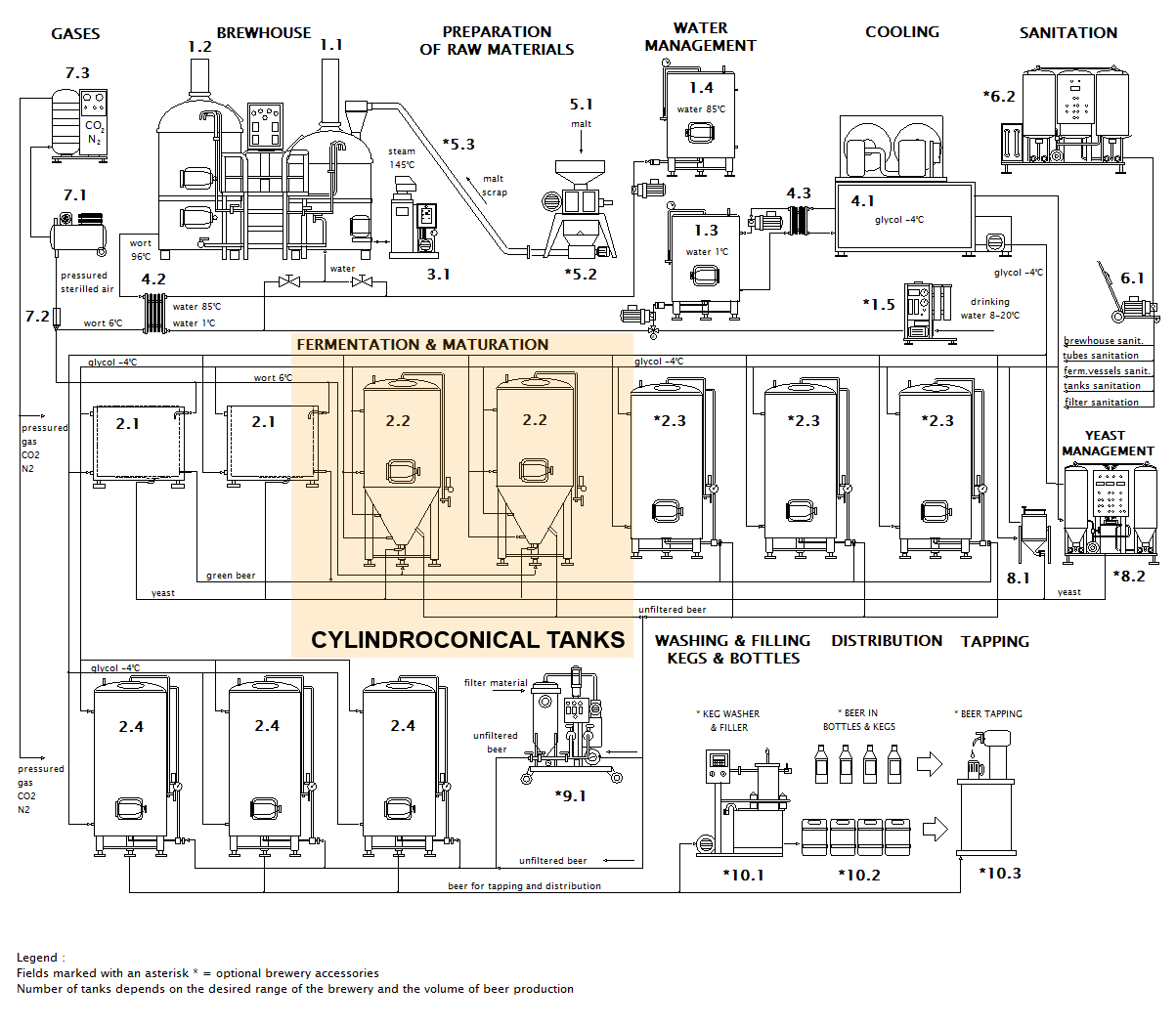
Standard equipment of the pressure cylindrically-conical fermentation tanks :
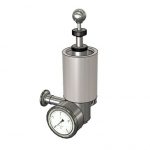

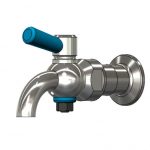
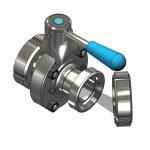
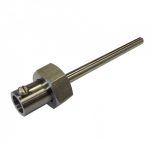
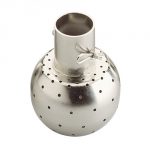
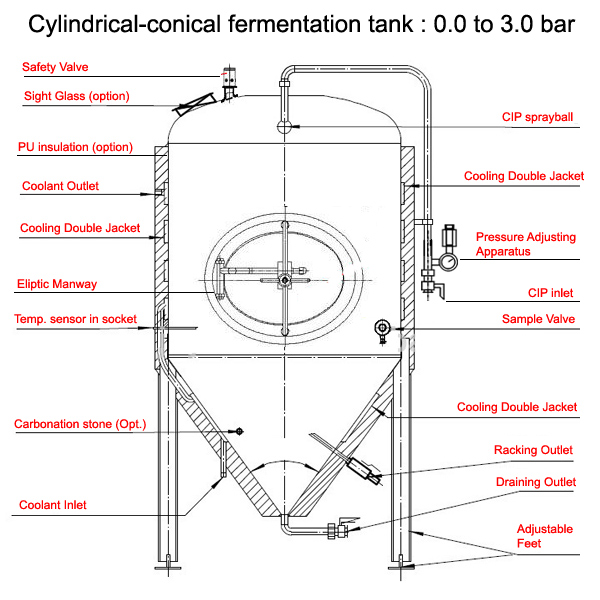
- Basic pressure vessel – the base tank is a cylindroconically shaped pressure vessel consisting of a cylindrical casing, a conical bottom and arched dome top (upper bottom). From the design phase, through the calculations, manufacturing process and final tests, this vessel is designed and manufactured as pressure tank, for the maximum pressure required by the customer. Mostly we produce cylindroconic pressure tanks for maximum 1.2 bar, 2.0 bar or 3.0 bar, but for the customer’s request we can produce the tanks up to the maximal pressure of 8.0 bar.
- Compulsory equipment of the pressure vessel – the production plate with mandatory data about the tank and its manufacturer, the registration number of the pressure vessel, specifying the standard according to which the tank was certified (most often PED 97/23 / EC, optionally also GOST, GUM). The Certification Authority, which assesses and approves each pressure vessel, is TÜV SÜD Czech for most of our pressure vessels. With each tank produced, we deliver a document of the pressure vessel that records all tank-associated events like inspections, repairs, amount of use, throughout the life of the tank.
- Safety valve – This special overpressure relief valve is designed to protect the tank against overpressure by a pressure higher than that for which it is certified and dimensioned. The overpressure relief valve is most often combined with a vacuum relief valve that protects the tank from collapse under vacuum (for example, when the tank contents are drained out using the pump). For bigger tank volumes, both the overpressure valve and the vacuum valve are solved as two separate valves.
- Vacuum valve – it protects the tank from collapse under vacuum (for example, when the content is drained out with a pump). With smaller tank volumes, the vacuum valve is replaced with simple non-return valve.
- Fermentation air lock – It is a structural element ensuring hermetic closure of the container to prevent beer contact with air and an infectious environment. A small amount of water in the fermentation plug separates the internal atmosphere of carbon dioxide from the outside. Due the bubble blowing mechanism with a spring, there is always a slight gauge of CO2 in the container under little overpressure. For pressurized cylindrically-conical tanks, the air lock is a part of a pressure adjusting apparatus, which also has a function of the overpressure control in the tank.
- Pressure adjusting apparatus – a special armature for the continuous setting of the overpressure in the tank. This armature is needed to transition from the primary non-pressure fermentation mode to the increased overpressure mode of the secondary fermentation inside the tank when the beer matures. This ensures the conditions for carbonization of the beer due the activity of the remaining yeast. At the same time, this valve serves as a fermentation plug, important for the main fermentation of beer.
- Inspection circular or oval door – special lockable door on the top or side of the tank that serves to inspect inside space of the tank, to mount or remove the internal armatures, to incomming yeast at the start of fermentation of the wort. The door is opening to inside or outside, according to their type. The pressure hatch also includes rubber or silicone gaskets, locking bolts, and a hinged arm joint. Optionally, we can deliver hatchways perfectly matched to the inside shape of the tank, making it easier to clean and sanitize the tank.
- Outlet pipe with the butterfly valve – a tube with a shut-off damper at the end that serves to discharge the tank contents. For the most tanks the pipe has also the filling function.
- Outlet pipe of pure product with the butterfly valve – the outlet armature is located above the bottom of the tank, or it is replaced with a double armature, including a pure product drain valve and a drain valve for entire content of the tank. It is used to purification of the product – the separation of pure beverage from the sedimentary sludge of yeast.
- CIP sprayball – a spherical shower for easy washing and sanitation of the tank with water and sanitizing solutions. The shower usually has a fix effective omni-directional shower head, optionaly rotational one in more expensive tanks. In addition, the CIP Cleaning Pipe is often used to push the product out of the tank using overpressure carbon dioxide (from CO2 pressure bottle), biogon or nitrogen (made using a nitrogen generator). It is often used to push the product from the tank by sterile air in combination with a small amount of CO2 gas released, which make an insulating layer on the surface of the drink – the carbon dioxide piston.
- Sample valve – it is used for sampling the product during its tasting and laboratory tests. The valve can be further equipped with a spiral attachment that eliminates the foaming of the beverage and speeds up the sampling process.
- Temperature sensor in the socket – the socket is a small tube welded on the side of the tank for insert the thermocouple of the control system, or thermometer for visual temperature measurement. For tanks of larger volumes, one tank contains two or more sockets for thermal sensors.
- Adjustable feet – the screw feet at the bottom end of the legs are used to accurately position the tank in a vertical or horizontal position.
- Dimple cooling jacket, double jacket, cooling duplicators – Cooling the tank is done with liquid which flows in double jacket of the tanks (most commonly a glycol water is used). The coolant flows through the double jacket channels of the container and circulates between the jacket and water cooler. The temperature in the tank is then controlled by a control system that compares the measured temperature in the tank with the desired temperature. The program-based system opens and closes the valves on the inlets to the tank cooling jackets. For simple non-insulated air-cooled tanks the tanks are not equipped with the cooling duplicators.
- PUR insulation – The tank is usually insulated with a polyurethane foam (optionally with other insulating material) that fills the space between the inner jacket and the outer shell of the tank. Usually, we only isolate only both the cylindrical and conical parts of the tank. On request, we also can insulate the upper and lower bottoms of the tank. For air-cooled tanks, the jackets are not insulated.
Optional equipment of the pressure cylindrical-conical fermentation tanks :
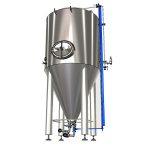
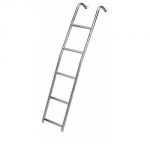
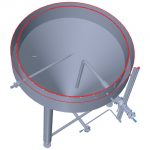
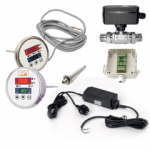
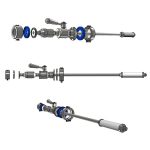
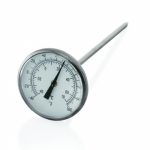
- Fill level indicator – Product level in the tank is visually indicated by a glass or plastic tube that is connected to the inside of the tank at the bottom and top. An important part of the indicator gauges is the connection with the sanitary fittings. Indicator gauges can be supplied without a scale, with a non-calibration scale or with a millimeter scale that is required in some states due to mandatory calibration (for example in Poland).
- Universal armature with the butterfly valve – May be used for fruit flotation, for example, in the production of cider drink, where an external pump is used to circulate the product through a connected external device.
- Tank ladder hooks – Hinges for secure fixing of a service ladder on the tank – standard for tanks with more height than 2000 mm or at the customer’s request. A service ladder compatible with hooks can also be included in the delivery.
- Transporting hinges – Hooks for safety hanging of the tank under the lifting device (crane, forklift) for easy and safe tank transport. We recommend it for tanks with volumes more than 500 liters.
- Temperature measuring and control system – in case of a customer’s request, we can supply a complete system for measuring and regulating tank temperature and additionally also a water cooler. The entire system is easy to install by the customer, any electrical work authorization is not required for installation and commissioning.
Cylindrically-conical tanks, liquid-cooled, with or without insulation
According to customer requirements, cylindroconical fermentation tanks are delivered in these variants in terms of cooling and insulation:
1. CCT-C Cylindrically-conical tanks cooled by liquid, insulated, with classical design
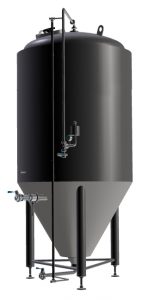 Classic isolated liquid-cooled cylindrically-conical fermentation tanks are a professional solution for all breweries for which cost savings are at the forefront of their requirements. The tanks are equipped with cooling channels through which the coolant (water with glycol) flows, and they are additionally insulated with a PUR foam. The outer jacket covers the insulation and forms a clean stainless steel fermentation tank design. Tanks can be placed in a non-insulated room, because the insulation ensures their protection against unwanted leakage of the temperature to the surroundings of the tank. Their advantage is above all the low power consumption of energy, the need for a less efficient water cooler, but also the comfort of human service that may not work in a cold environment.
Classic isolated liquid-cooled cylindrically-conical fermentation tanks are a professional solution for all breweries for which cost savings are at the forefront of their requirements. The tanks are equipped with cooling channels through which the coolant (water with glycol) flows, and they are additionally insulated with a PUR foam. The outer jacket covers the insulation and forms a clean stainless steel fermentation tank design. Tanks can be placed in a non-insulated room, because the insulation ensures their protection against unwanted leakage of the temperature to the surroundings of the tank. Their advantage is above all the low power consumption of energy, the need for a less efficient water cooler, but also the comfort of human service that may not work in a cold environment.
>> Our offer for classic insulated cylindrically-conical fermentation tanks
2. CCT-S Cylindrically-conical tanks cooled by liquid, non-insulated, with simplified design
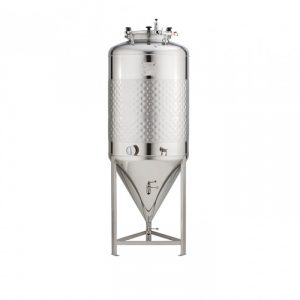 Cylindrically-conical tanks without insulation are cheaper than isolated liquid-cooled tanks. The tanks are equipped with cooling channels through which the coolant (water with glycol) flows, but the tanks have no insulation and the outer casing. Tanks are recommended to be placed in a slightly isolated, uncooled room or isolated box, where there is no excessive heating of the tanks by air. Their advantage is the relatively low purchase price, the disadvantage is higher energy consumption when cooling tanks, and also the need for a more efficient water cooler than for isolated tanks.
Cylindrically-conical tanks without insulation are cheaper than isolated liquid-cooled tanks. The tanks are equipped with cooling channels through which the coolant (water with glycol) flows, but the tanks have no insulation and the outer casing. Tanks are recommended to be placed in a slightly isolated, uncooled room or isolated box, where there is no excessive heating of the tanks by air. Their advantage is the relatively low purchase price, the disadvantage is higher energy consumption when cooling tanks, and also the need for a more efficient water cooler than for isolated tanks.
We offer two variations of this type beer tank :
- CCT-SLP –simplified cylindrically-conical tanks , non-insulated, 1.2 bar
- CCT-SHP –simplified cylindrically-conical tanks , non-insulated, 3.0 bar
>> Our offer for simplified non-insulated cylindrically-conical tanks
Cylindrically-conical pressure tanks are manufactured in variable dimensions
Dimensions of our cylindrically-conical tanks can be customized according to the customer’s requirements, with the ratio of the sides to the tank diameter being possible to choose from several variants.
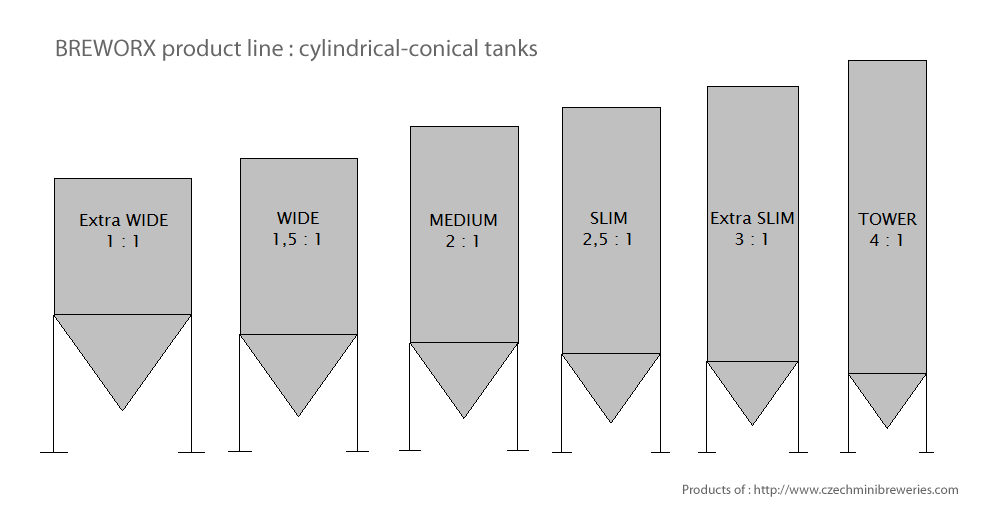
More informations about this type of beer production tank:
- Catalogue of the cylindrically-conical fermentation tanks
- What are the cylindrical conical fermentation tanks
